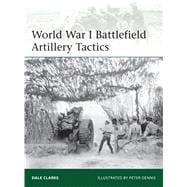From the beginning of 'trench warfare' in winter 1914/15, artillery became the absolutely dominant arm in all the major armies for the rest of World War I, to a degree never seen before or since. The numbers and capabilities of the guns and ammunition available governed all the generals' battle plans; and the ways in which they were employed, and either succeeded or failed, decided the outcome of battles. The majority of the millions of casualties suffered during the war fell victim to artillery fire.
The artillery war fell into three distinct phases along a four-year learning curve (with the necessary equipment and training for the second and third phases always lagging behind the tactical needs). The war began with mostly light, mobile artillery equipped and trained to support fast-moving infantry and cavalry by direct fire, mostly with air-bursting shrapnel shells.
The entirely unexpected end of the first campaigns of manoeuvre as the armies bogged down in static trench warfare found both sides ill equipped and ill trained for what was in essence siege warfare on an industrial scale. This demanded more and heavier guns and high-explosive shells, and more complex skills for indirect fire - observation on the ground and in the air, locating targets (including enemy artillery), dropping the right kind of shells on them, the communications needed for co-ordinating the work of hugely increased numbers of guns, and getting many millions of shells up to them for week-long bombardments. These seldom worked as anticipated (classically, by failing to 'cut the wire' or to penetrate deep bunkers); so innovative officers on both sides worked to devise new tactics, with more versatile mixes of ammunition (e.g. gas shells, smoke shells, star shells and so on) and more imaginative ways of using them, such as box barrages and creeping barrages.
Finally, in early 1918, the static slogging broke down into a renewed phase of manoeuvre warfare, made possible by sophisticated co-operation between artillery and infantry, plus the newly important air and mechanised forces. The lessons that were finally learned shaped the use of artillery worldwide for the rest of the 20th century.
Fully illustrated with period photographs and specially drawn colour artwork and drawing upon the latest research, this engaging study explains the rapid development of artillery tactics and techniques during the conflict in which artillery played a pre-eminent role - World War I.








